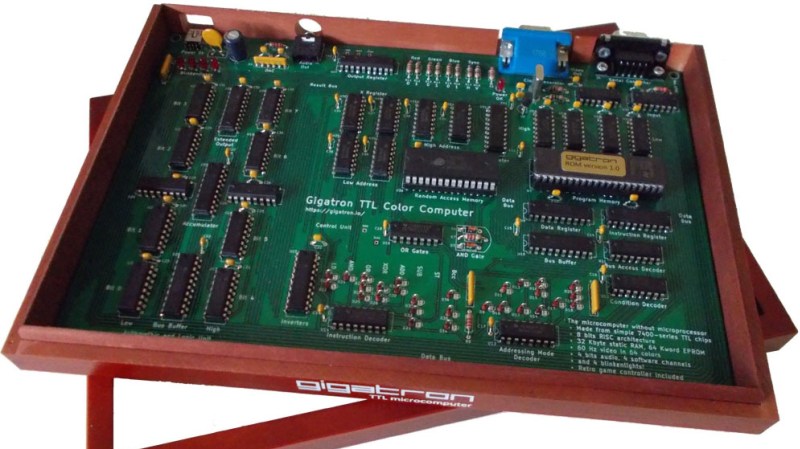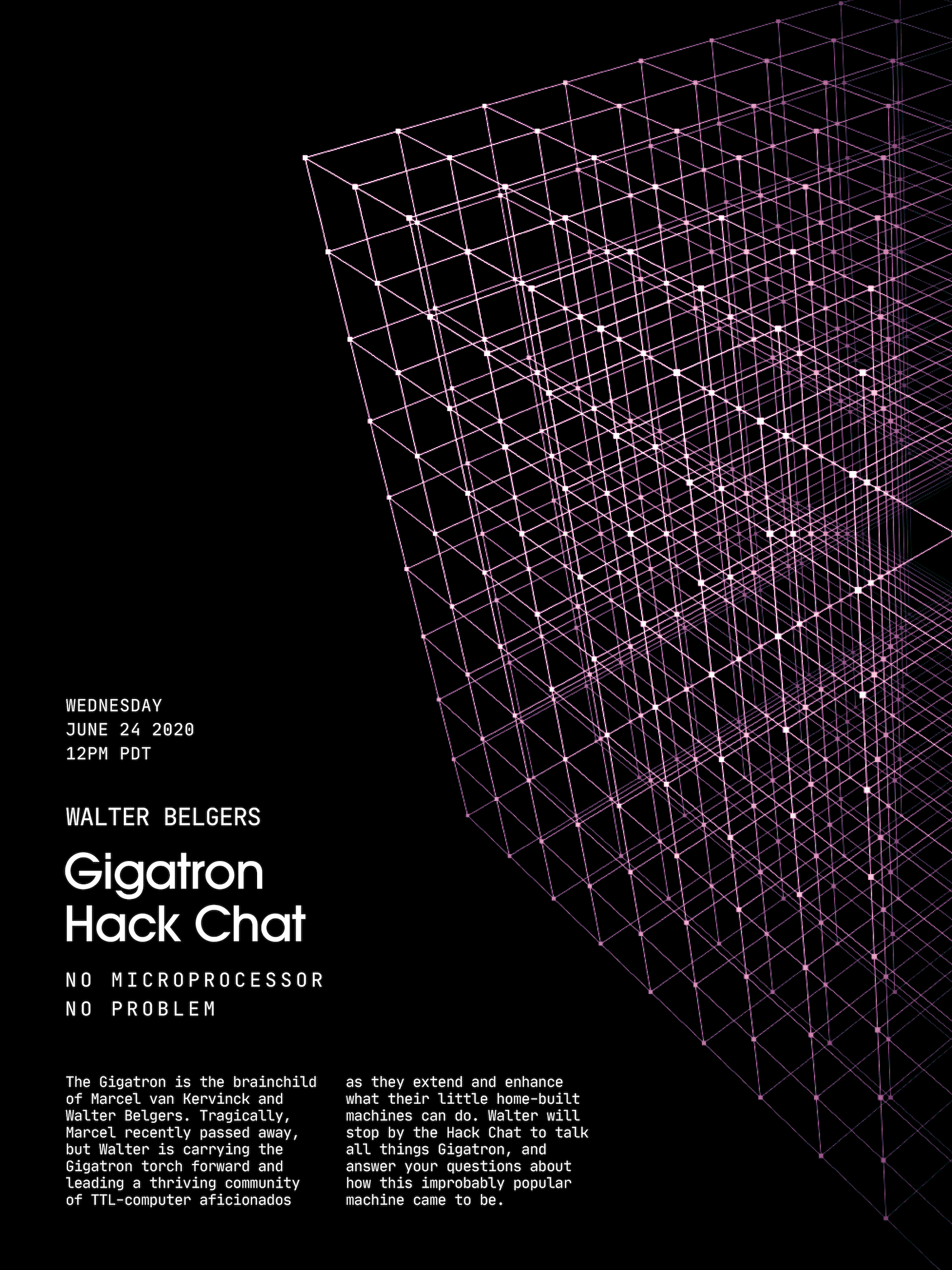Join us on Wednesday, June 24 at noon Pacific for the Gigatron Hack Chat with Walter Belgers!
There was a time when if you wanted a computer, you had to build it. And not by ordering parts from Amazon and plugging everything together in a case — you had to buy chips, solder or wire-wrap everything, and tinker endlessly. The process was slow, painful, and expensive, but in the end, you had a completely unique machine that you knew inside out because you put every bit of it together.
In some ways, it’s good that those days are gone. Being able to throw a cheap, standardized commodity PC at a problem is incredibly powerful, but that machine will have all the charm of a rubber doorstop and no soul at all. Luckily for those looking to get back a little of the early days of the computer revolution or those that missed them entirely, there are alternatives like the Gigatron. Billed as a “minimalistic retro computer,” the Gigatron is a kit that takes the builder back even further in time than the early computer revolution since it lacks a microprocessor. All the logic of the 8-bit computer is built up from discrete 7400-series TTL chips.
The Gigatron is the brainchild of Marcel van Kervinck and Walter Belgers. Tragically, Marcel recently passed away, but Walter is carrying the Gigatron torch forward and leading a thriving community of TTL-computer aficionados as they extend and enhance what their little home-built machines can do. Walter will stop by the Hack Chat to talk all things Gigatron, and answer your questions about how this improbably popular machine came to be.
 Our Hack Chats are live community events in the Hackaday.io Hack Chat group messaging. This week we’ll be sitting down on Wednesday, June 24 at 12:00 PM Pacific time. If time zones have you down, we have a handy time zone converter.
Our Hack Chats are live community events in the Hackaday.io Hack Chat group messaging. This week we’ll be sitting down on Wednesday, June 24 at 12:00 PM Pacific time. If time zones have you down, we have a handy time zone converter.
Click that speech bubble to the right, and you’ll be taken directly to the Hack Chat group on Hackaday.io. You don’t have to wait until Wednesday; join whenever you want and you can see what the community is talking about.

















“In some ways, it’s good that those days are gone.”
Now I need to reread The Soul of a New Machine.
You can step down even a few levels further by building Burkard Kainka’s TPS – basically a 3 Switch Programmed System. All you have is a Processor with an Interpreter in the Middle, 4 LEDS as DISPLAY – 1 LED for quasi-analog OUTPUT as PWM, 4 digital INPUTs, 2 Analog INPUTs. And the Keyboard is veeeery minimalistic as well – RESET, INCREMENT Memory Location at adress, AND switch between Code and Data and Program and increment location. OK, it is all in 4 BIT, but it works. Came out as kit about 5 years ago – and just has the SECOND LIFE – just came out again. Just ordered one for fun. There is the original board, there is the Arduino Sketch that Willie did, and there is as well an implementation in FORTH – TPS was difficult to transdlate – so I called it MyCo – My Computer https://wiki.forth-ev.de/doku.php/en:projects:myco:start Nothing against GIGATRON – a great idea, but then afterwards it would be another box in my collection … So not for me.
Yip… same here… maybe the universe indeed is ridiculously large, but unluckily my home is not.
I hope in future there will be more FPGA implementations (using free and portable toolchains) of such cuties like the Gigatron. Refilling a digital breadboard on a chip over and over again with interesting stuff only is 1 more box… or 2 with a backup for easier bug tracking.
Nice to see Gigatron not becoming an orphan!
RIP Marcel. Your kindness (and patience) helping me get a working kit together after making some ‘dumb’ mistakes showed your humanity. The gentlemen truly went above and beyond. Godspeed.
RIP Marcel. Gigatron is more than a homebrew computer kit, it’s a work of art. <3